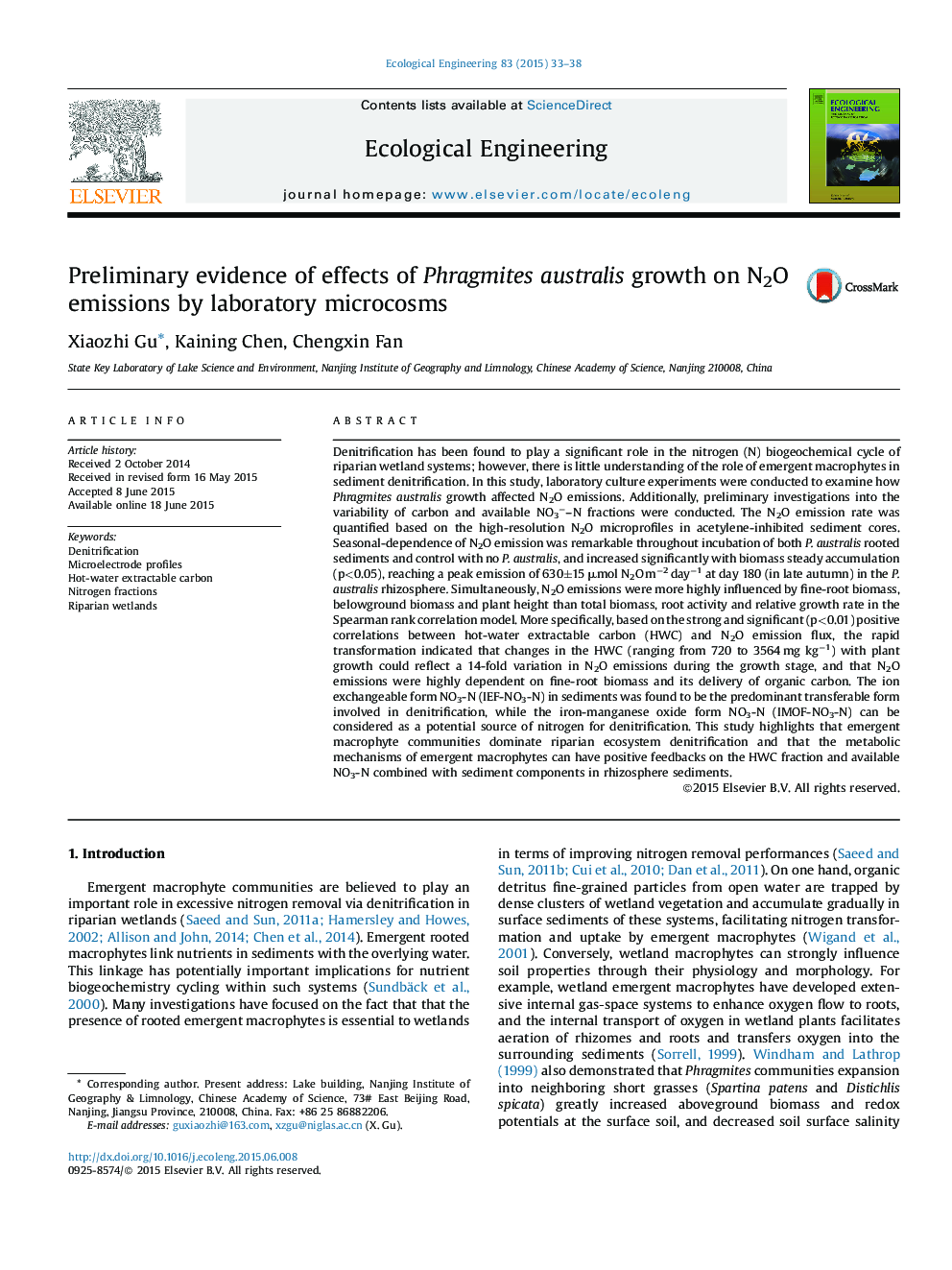| Article ID | Journal | Published Year | Pages | File Type |
|---|---|---|---|---|
| 4388846 | Ecological Engineering | 2015 | 6 Pages |
•A peak emission of N2O was found at the later stage of P. australis elongation growth.•N2O emissions significantly depended on fine-root biomass and its delivering organic carbon.•P. australis metabolic mechanisms can have positive feedbacks on HWC and available NO3–N.•Ion-exchangeable and iron-manganese oxides NO3–N is a potential source for denitrification.
Denitrification has been found to play a significant role in the nitrogen (N) biogeochemical cycle of riparian wetland systems; however, there is little understanding of the role of emergent macrophytes in sediment denitrification. In this study, laboratory culture experiments were conducted to examine how Phragmites australis growth affected N2O emissions. Additionally, preliminary investigations into the variability of carbon and available NO3−–N fractions were conducted. The N2O emission rate was quantified based on the high-resolution N2O microprofiles in acetylene-inhibited sediment cores. Seasonal-dependence of N2O emission was remarkable throughout incubation of both P. australis rooted sediments and control with no P. australis, and increased significantly with biomass steady accumulation (p<0.05), reaching a peak emission of 630±15 μmol N2O m−2 day−1 at day 180 (in late autumn) in the P. australis rhizosphere. Simultaneously, N2O emissions were more highly influenced by fine-root biomass, belowground biomass and plant height than total biomass, root activity and relative growth rate in the Spearman rank correlation model. More specifically, based on the strong and significant (p<0.01) positive correlations between hot-water extractable carbon (HWC) and N2O emission flux, the rapid transformation indicated that changes in the HWC (ranging from 720 to 3564 mg kg−1) with plant growth could reflect a 14-fold variation in N2O emissions during the growth stage, and that N2O emissions were highly dependent on fine-root biomass and its delivery of organic carbon. The ion exchangeable form NO3-N (IEF-NO3-N) in sediments was found to be the predominant transferable form involved in denitrification, while the iron-manganese oxide form NO3-N (IMOF-NO3-N) can be considered as a potential source of nitrogen for denitrification. This study highlights that emergent macrophyte communities dominate riparian ecosystem denitrification and that the metabolic mechanisms of emergent macrophytes can have positive feedbacks on the HWC fraction and available NO3-N combined with sediment components in rhizosphere sediments.
